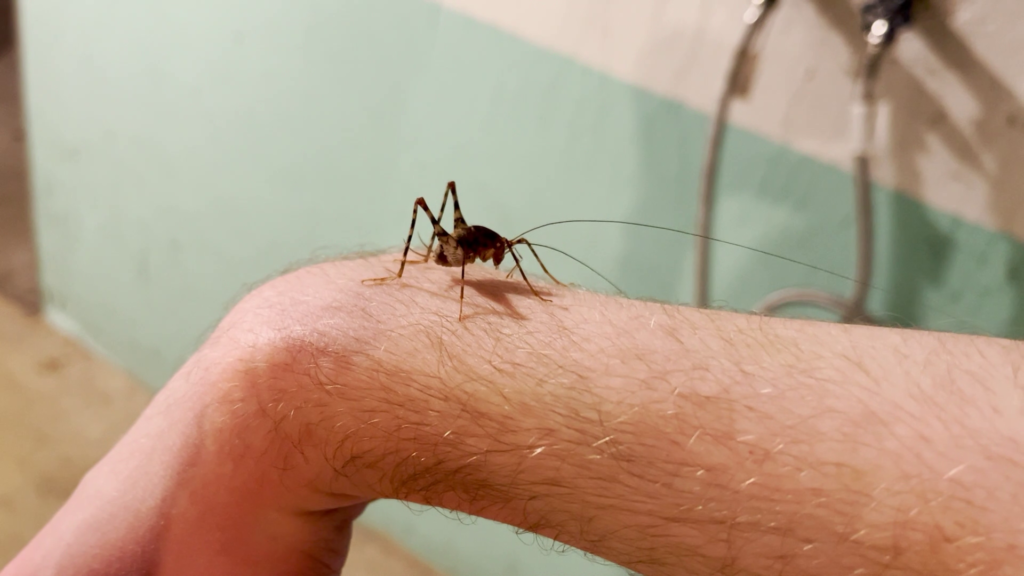Published on 18 September 2022
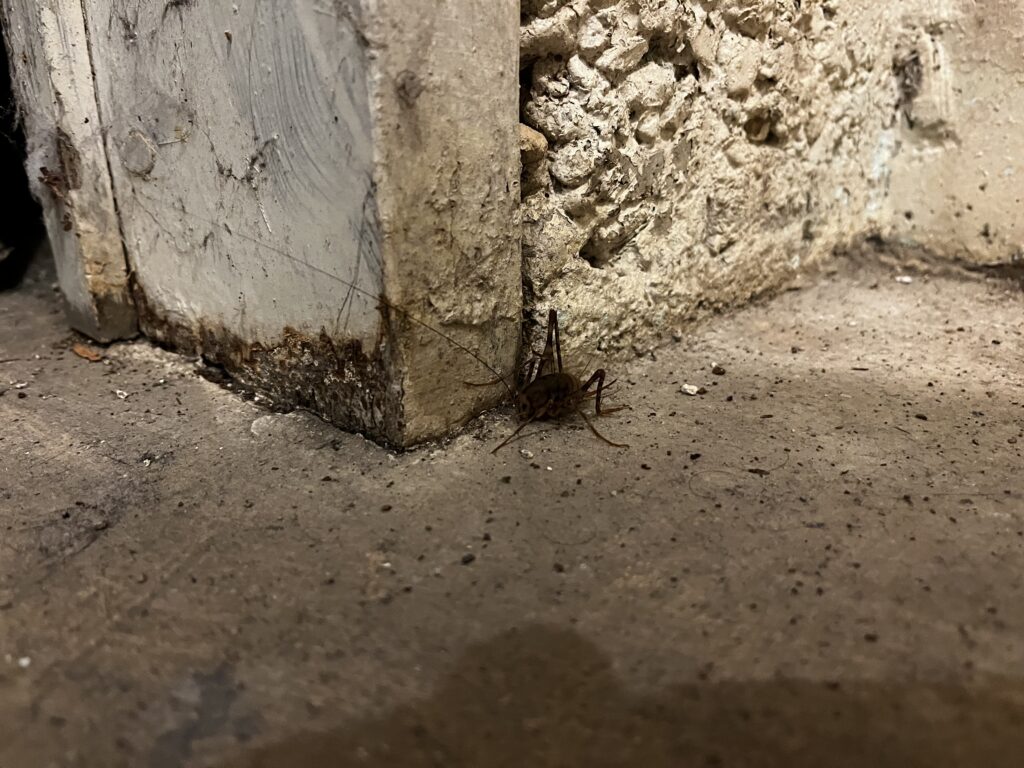
The building I live in is home to some invertebrate squatters. Likely outnumbering the human residents are the camel crickets in the basement. I first encountered a camel cricket, family Rhaphidophoridae, as a child, seeing them on the walls of a cave. While a dark, humid basement is a rather less frightening environment, it suits the crickets fine too. Camel crickets are named for the distinct hump of their backs. Some people call them “cave crickets,” for clear reasons, or “spider crickets” due to their allegedly arachnid appearance that likely stems from people seeing their shadowy forms on a surface and mistaking the slender antennae for legs. These crickets are harmless, though they might vainly gnaw on a human if they have the opportunity, and unlike their more familiar surface-dwelling counterparts, do not even chirp in a way that could produce an annoying sound indoors.
I have got into the habit of photographing these crickets with my iPhone. Perhaps me being the sort of person who would be crouching in a dingy basement at 3:00 AM to excitedly photograph vermin has something to do with why I lack friends.

The dimness of the basement results in rather fuzzy images. But I think that a certain allure lingers over that amateurishness, like photographic evidence of a cryptid. The limited light sources also result in dramatic shadows that emphasize the joints of the crickets’ mighty back legs. These crickets’ only method of self-defense is startling other animals by jumping at them like popcorn. This practice causes the animals to seem unpleasant to those who, for whatever unimaginable reason, do not like insects.
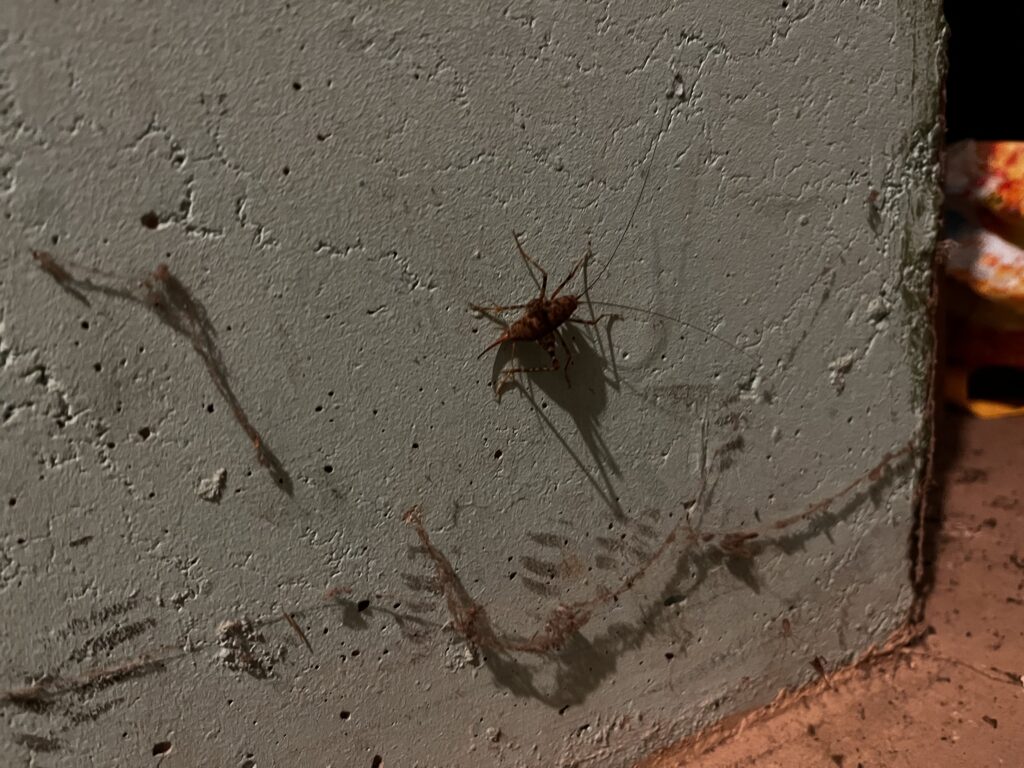
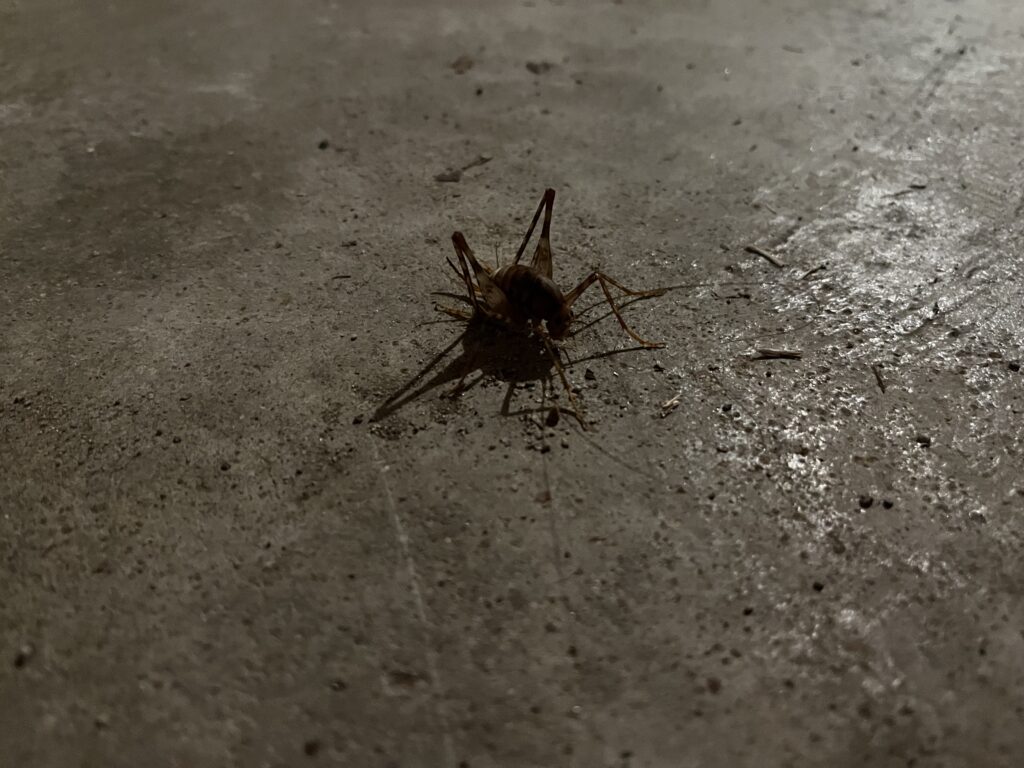
What do the dwellers of the deep do down there? I rarely see them during the day, but after dark the crickets appear scattered around the basement. As I understand it, the behavior of these crickets has received little scientific attention, leaving to speculation questions of how they spread from basement to basement, for example, or how many of them live outside of anthropogenic structures or threaten native species in the wilderness. Ironic that the most mundane of animals remain mysterious.
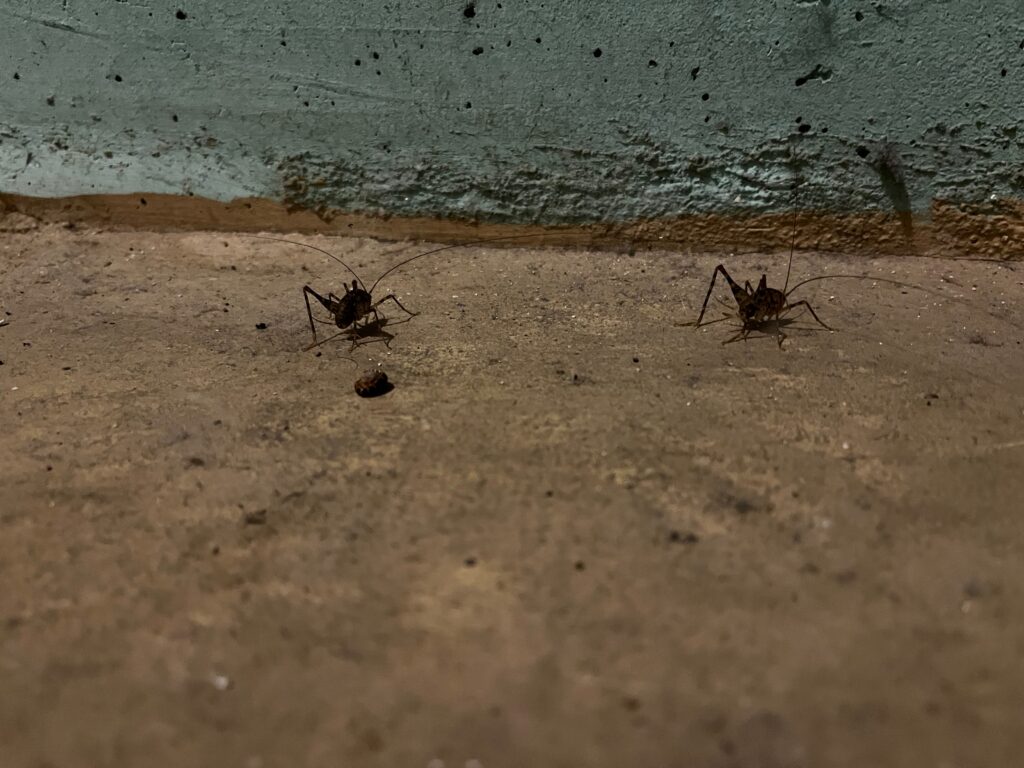
I often see the camel crickets standing around in clusters, like surly teenagers, a few on the floor and a few on the wall. Rarely do I observe them move unless I get near them. Usually this means hopping away or toward me. A cricket will be completely still, but when I bring my camera lens near a body I think might be asleep, the antennae begin to wave around. So they may notice the way I displace the air or some other quality, such as the subtle heat I, as an endotherm, radiate. Otherwise they seem to remain in place, on occasion tapping an antenna around to sound out their surroundings. The crickets perceive the world primarily through their antennae. Although their eyesight is lousy compared to a human’s, camel crickets have shiny little teddy bear eyes that make them so cute I wish I could pet them. Rather, I wish they would appreciate being petted.
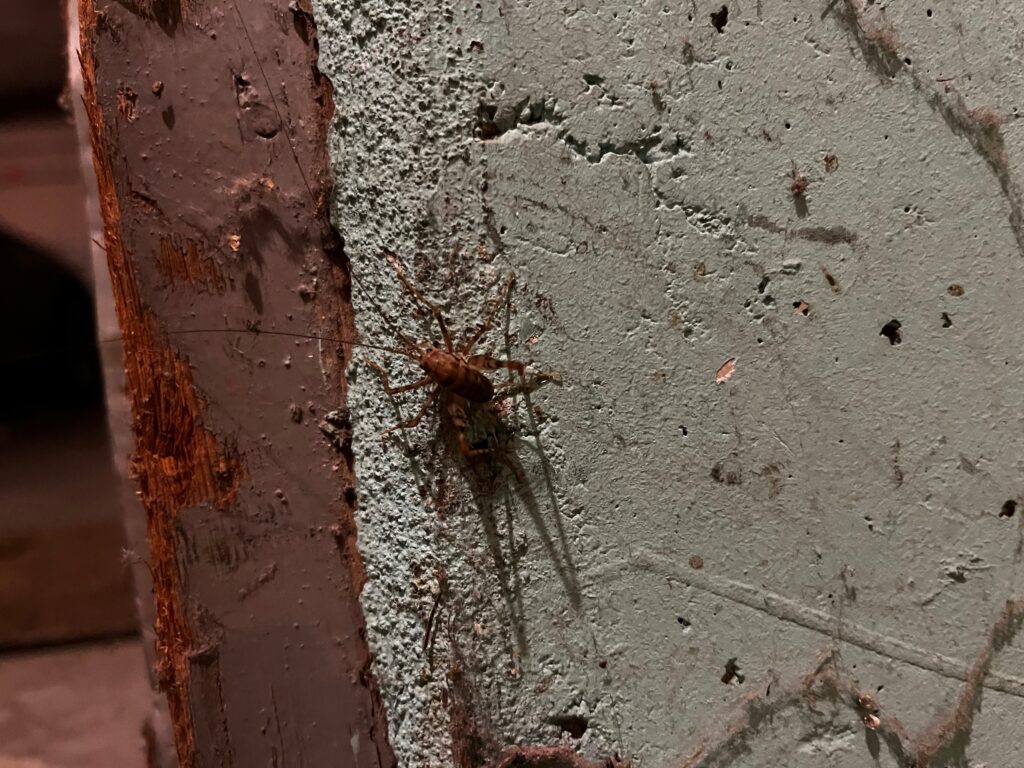
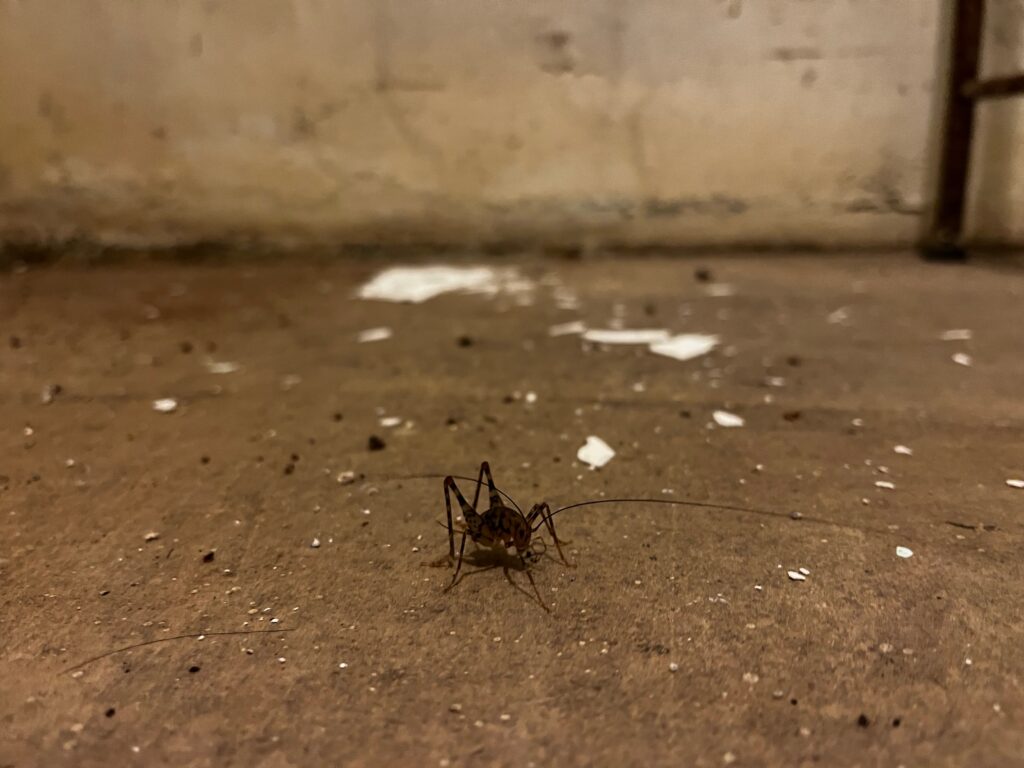
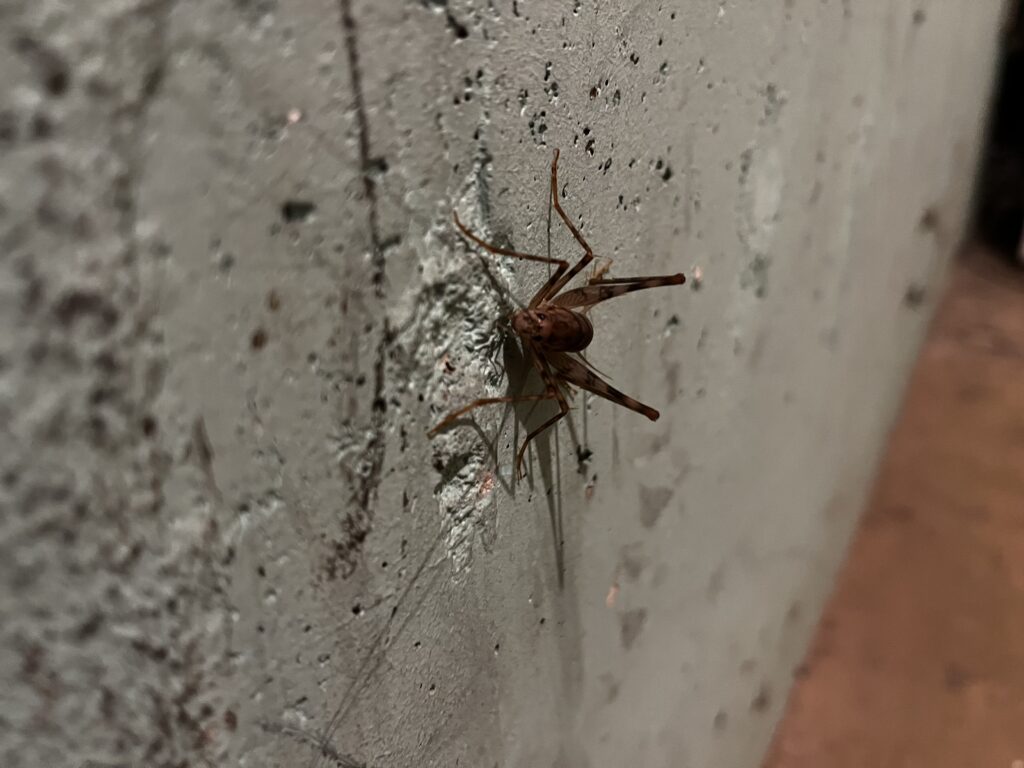
Aside from chilling out, their main activity is, presumably, producing more crickets. Truly, they are wiser than us. To be a bug, making no mess, feeling no anxiety or sorrow, and harming no one. While the crickets in these photos are large, I do notice much tinier ones leaping away from my feet. These, I assume, are are the youngsters.
I am not sure what the crickets eat. They are omnivorous scavengers, so other insects dying or molting, or other crickets dying or molting, would provide food. I sometimes see the crickets under the webs of Pholcidae spiders, so they might be eating scraps the spider drops. The leaking ceiling could also cause some kind of mold growth, another source of food. Reportedly, camel crickets eat cloth, so they might climb into the bin to gnaw on laundry lint. The mysterious black substance that lay in a channel between the drain and the boiler could also appeal to the crickets. I once saw a cricket seemingly gnawing on a scrap of foil of the kind that wraps some candy. Were there not other tenants I might disturb, I might leave a bit of cucumber downstairs and see if the crickets began munching on it.
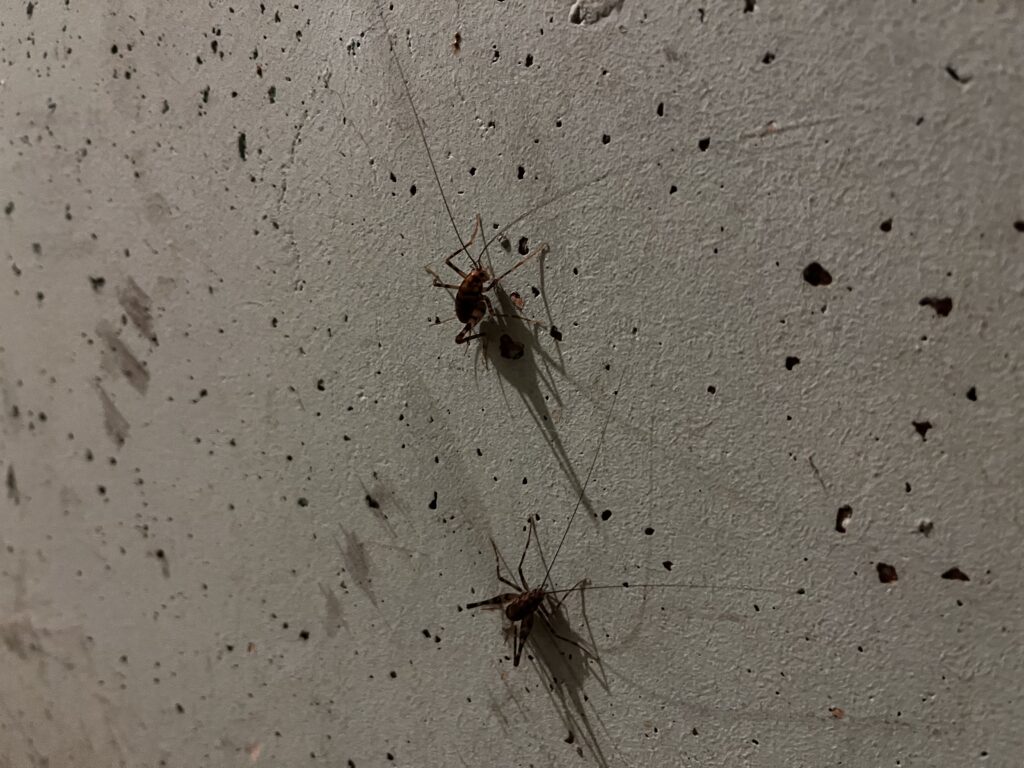

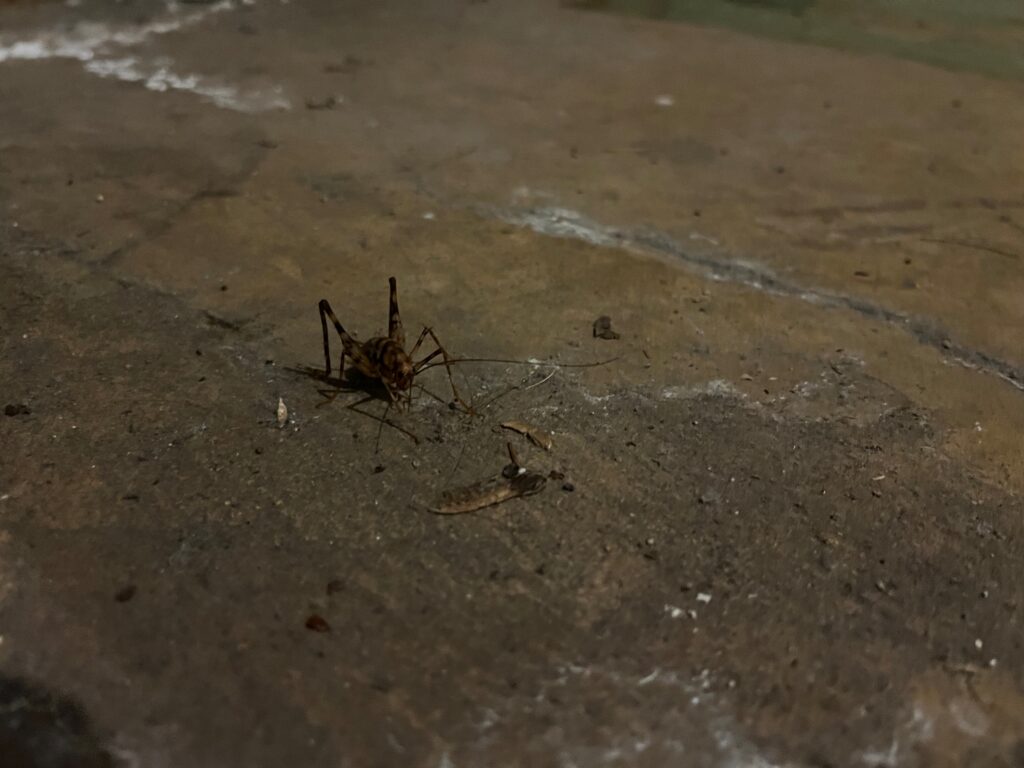
These basement dwellers are likely not indigenous camel crickets but Diestrammena asynamora, a species from Asia that a 2014 study titled “Too big to be noticed: cryptic invasion of Asian camel crickets in North American houses” found, along with Diestrammena japanica, had largely displaced native camel crickets in North American basements. I am unsure if this has a substantial negative ecological impact. Whereas all people in North America are called on to exterminate the invasive spotted lanternfly, a task made more difficult by the insect’s beauty, no scenario is likely ever to arise with regard to these crickets. Many species simply live among humans without clear effects on the local environment, such as the cosmopolitan house centipede Scutigera coleoptrata.
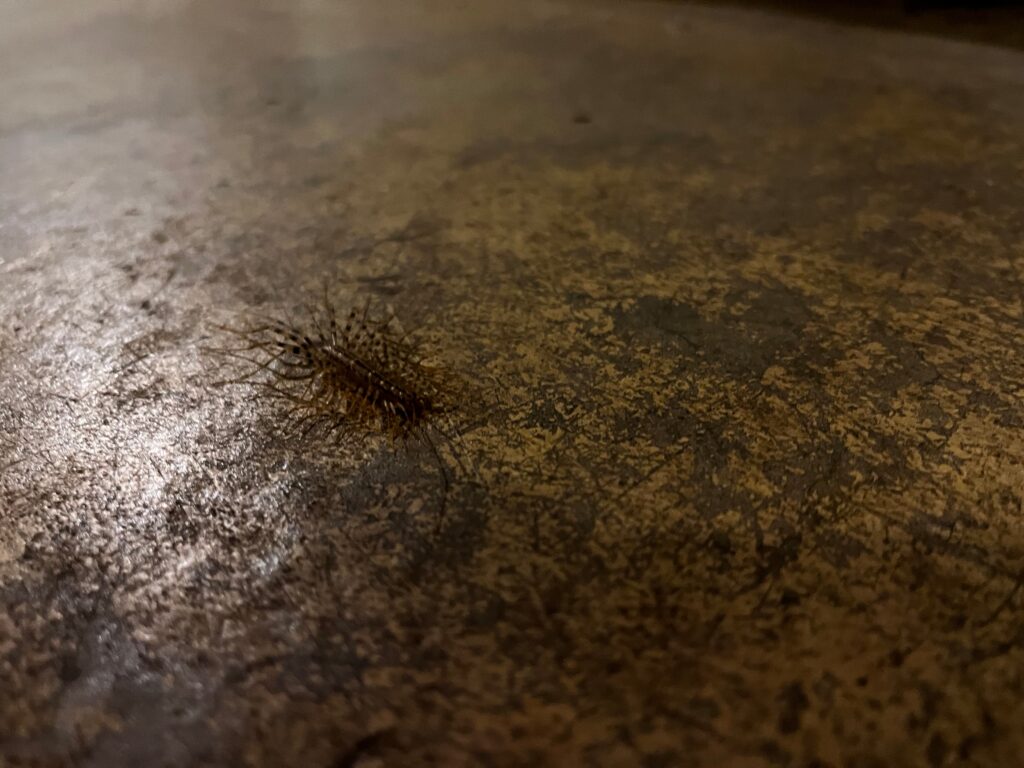
These centipedes are less common than the camel crickets and much more skittish. They are tougher to photograph, rushing to hide before I can snap the picture. If people realized how scaredy centipedes are, they might fear them less.
While I have never once seen a cricket leave the basement, I sometimes catch multiple centipedes per day in my apartment. Sometimes the centipede, once trapped in a glass, scrambles around in a panic, trying to climb out. Other centipedes immediately relax and begin grooming themselves like tiny cats. Is there a small ecosystem downstairs? A camel cricket would be a great meal for a centipede large enough to apprehend one, and the young camel crickets easy prey. Sometimes I see fragments of the molted shells of centipedes around. Since I doubt the landlord ever cleans the basement, I assume the crickets must eat these. And as the crickets always multiply more quickly than a predator like a centipede does, there is always food for them, even as they leave food for the crickets. In addition to crickets, I have also found a June bug, black ground beetles, and a (probably poisoned) caterpillar among the dwellers of the deep. I removed all of these other creatures, leaving most in the clover outside. One of the black ground beetles fought my hand every step of the way. Another remained calm, visibly raising its head to look around, something like a dog standing on its hind legs.
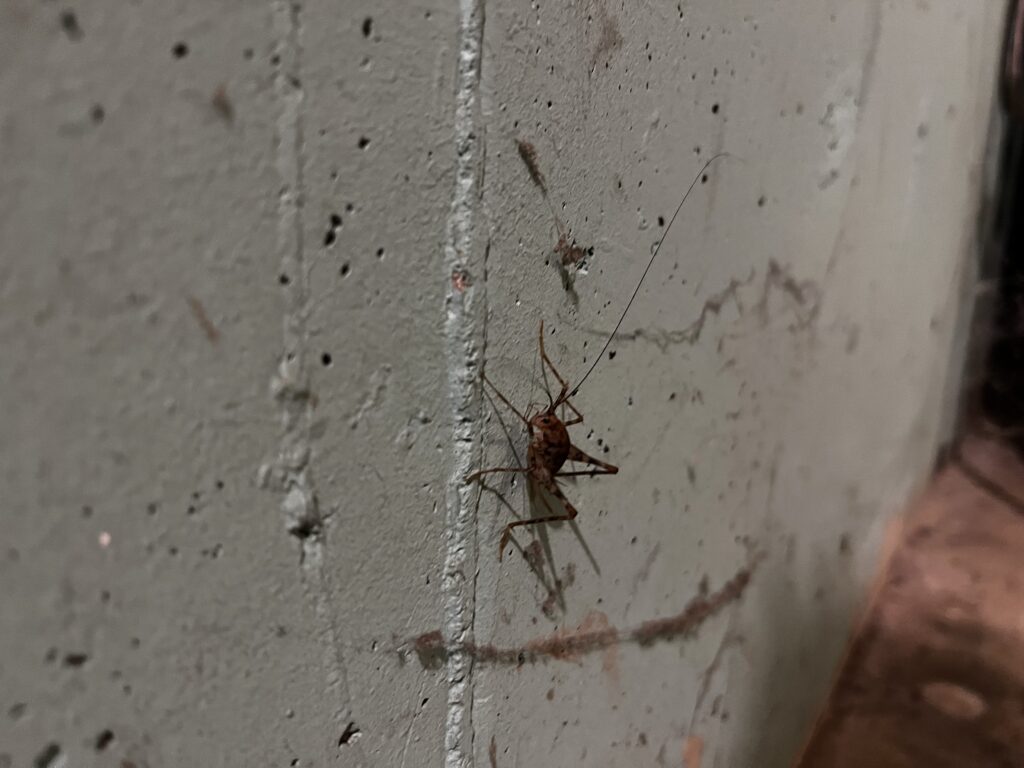
I have began to make friends with the crickets. By which I mean I have got a few to crawl on me. As elating as this is, a cricket is not the sort of being I can cuddle with or kiss or tell secrets, so I will still need to find different friends.
